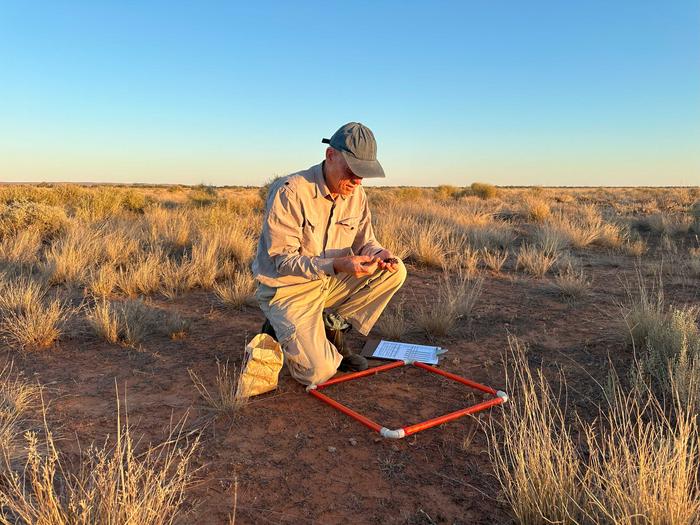Researchers from various global institutions have collaborated on a groundbreaking study that unveils critical insights into herbivore distribution through dung analysis. The study, published in the prestigious journal Nature Food, provides a novel approach to estimating the presence of herbivores in dryland ecosystems, which represent nearly 40% of the world’s terrestrial surface. By leveraging dung records as a reliable indicator of herbivore presence, the research not only reshapes our understanding of livestock and wild herbivore dynamics but also highlights the diverse ecological roles that dung plays in arid environments.
Dung, often dismissed as mere waste, serves as a biological footprint that can reveal much about our ecosystems. In this research, dung is seen not just as an indicator of herbivore presence but also as a resource utilized by millions globally. From serving as a natural fertilizer that enriches soil to being a source of energy for cooking in many rural communities, dung’s significance transcends its traditional perception as waste. This research sheds light on the ways in which dung acts as a vital resource, influencing not only ecological health but also the livelihoods of countless people.
The research, spearheaded by Professor David Eldridge from UNSW Sydney, collated an extensive database of 50 global datasets detailing dung mass and grazing pressure from multiple herbivore species, including cattle, sheep, and various native grazers. This comprehensive data set has allowed researchers to draw strong correlations between dung mass and grazing pressure, reflecting the overall health of herbivore populations in various regions across the globe. Through meticulous analysis, the research has unveiled patterns of dung production, revealing vital information about herbivore concentration in specific areas.
One surprising finding of the study is the limited overlap in habitat occupation between livestock and native wild herbivores. In many regions where livestock thrive, wild herbivores tend to avoid, likely due to competition for resources or the risk of disease transmission from domestic animals. This insight is crucial for conservation efforts and agricultural practices alike, as it paves the way for more strategic land management decisions to promote coexistence among different herbivore species. Understanding these spatial dynamics can significantly impact biodiversity conservation strategies while simultaneously enhancing livestock productivity and health.
Traditionally, estimates of livestock density have relied heavily on broad environmental variable assessments, including factors like mean annual rainfall and temperature. These coarse models often miss nuanced interactions in the ecosystem, leading to inaccuracies in understanding herbivore distribution. By incorporating dung data into these estimations, the researchers offer a valuable alternative that promises improved precision. The findings indicate that dung counts can effectively augment traditional methods, providing a more comprehensive picture of herbivore populations in varying ecosystems.
Utilizing dung not only provides a clearer understanding of herbivore dynamics but also aids in capturing data about potential environmental threats. For example, understanding dung patterns can assist organizations in monitoring and predicting the spread of diseases that afflict livestock, such as brucellosis. Dung, therefore, functions as a dual tool for researchers, allowing them to analyze both available natural resources and potential risks to agriculture and food security.
The research’s impact is further amplified by its implications for global food production. Identifying dung hotspots can inform agricultural practices, potentially leading to enhancements in yield predictions and better resource allocation. As the study indicates, accurately predicting herbivore distribution can help foresee impacts from natural disasters, droughts, or other environmental shifts on food security. This knowledge equips farmers and policymakers with the needed insights to respond proactively to changing conditions.
The research methodology employed by the team included high-resolution mapping through dung analysis across diverse dryland sites globally. The study’s rigorous approach ensures that it provides robust findings that can influence various sectors reliant on livestock and herbivore management. By intertwining data-driven insights with practical agricultural considerations, the results offer a promising outlook for sustainable farming and effective land management practices.
Moreover, the assessment goes beyond the traditional application of dung as a mere waste product; it opens up new avenues for scientific inquiry. Dung counting can frequently yield more accurate estimates of species densities than conventional animal counts, which can be challenging and costly. By utilizing dung as an indicator, researchers can gain crucial insights into animal behavior, habitat preferences, and even interactions between species, offering a comprehensive understanding of ecosystem dynamics.
Aside from its academic implications, the study holds essential practical applications for farming communities. Local farmers can leverage dung data to optimize their land management practices, enhancing livestock health and production. By understanding dung distribution within their paddocks, farmers can make informed decisions about resource allocation, grazing patterns, and habitat management that would lead to improved livestock yield.
Despite the inherent complexities associated with dung assessments, including cultural practices surrounding dung collection in various regions, the research managed to preserve the integrity of its findings. Even accounting for these variables, a strong relationship between dung mass and grazing pressure remained evident, validating the study’s hypothesis. This resilience reinforces dung’s value as a significant measure in ecological assessments and agricultural planning.
In conclusion, this transformative research serves as an essential step forward in our understanding of herbivore distribution in drylands. By leveraging dung as a biological resource, researchers have illuminated new pathways for enhancing agricultural practices, improving food security, and conserving biodiversity. The innovative approach laid out in this study exemplifies how a common byproduct can hold keys to complex ecological dynamics, promising a future where science and sustainable agriculture can harmoniously coexist.
Subject of Research: Herbivore distribution and dung analysis in dryland ecosystems
Article Title: Dung predicts the global distribution of herbivore grazing pressure in drylands
News Publication Date: 14-Jan-2025
Web References: DOI
References: [Nature Food, DOI: 10.1038/s43016-024-01112-9]
Image Credits: Professor David Eldridge studies herbivore dung on a field trip to Fowler’s Gap
Keywords: Dung analysis, herbivore distribution, ecological health, livestock density, sustainable agriculture, biodiversity conservation, food security, environmental monitoring, scientific methodology, agricultural practices, dryland ecosystems.





